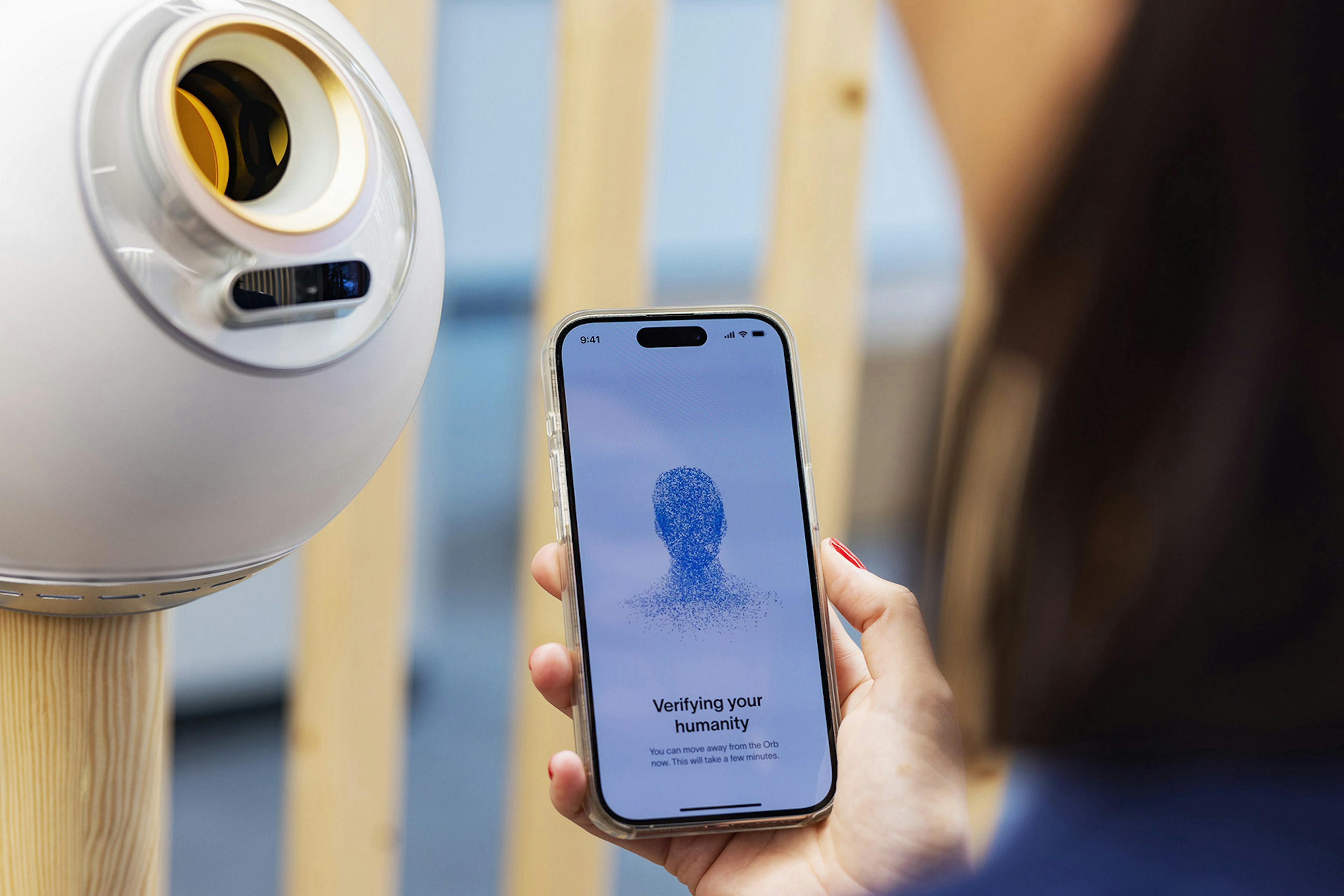
Habang ang AI ay umuunlad, ang data anonymization ay nagkakaroon ng mas mahalagang papel sa pagtutuli sa privacy.
Iyon ay dahil malaking halaga ng data ang kailangan upang magsanay ng AI. Ngayon, ang data na iyon ay kumikilala sa mga tao, ang kanilang mga pattern at gawi, ang kanilang mga gusto at hindi gusto, at iba pa, at kailangan pang gawin upang maprotektahan ang mga tao bilang resulta ng mga AI-driven na realidad sa privacy.
Ang pag-anonymize ng datos, maging para sa pagsasanay ng AI o paglikha ng mga kasangkapan para mapanatiling ligtas ang mga tao sa panahon ng AI, ay mahalaga. Ngunit ano ang anonymization at paano ito gumagana upang maprotektahan ang indibidwal na privacy?
Paano ina-anonymize ng World ang datos
Ang pag-anonymize ng datos ay nangangahulugan ng pagbabago ng datos upang hindi ito epektibong maiugnay pabalik sa isang indibidwal.
May iba't ibang paraan upang i-anonymize ang datos. Naaabot ng World ang anonymization sa pamamagitan ng paggamit ng advanced na cryptography na kilala bilang Multi-Party Computation, na aming pinapalago upang lumikha ng Anonymized Multi-Party Computation (AMPC). Ganito ito gumagana.
- Kapag ang isang tao ay nagpapatunay ng kanilang World ID sa isang Orb, kinukunan sila ng larawan ng kanilang mukha at mga mata. Isang numerikal na kodigo (iris code) ang inia-abstrak mula sa larawan ng kanilang mga mata. Ang kodigo na ito ay maaaring gamitin upang patunayan na sila ay isang natatanging tao at ang mga larawan na ginamit upang lumikha ng kodigo ay tanging sa device ng indibidwal naiimbak, hindi kailanman sa Orb.
- Ang iris code ay saka kinokopya ng cryptographic sa maraming naka-encrypt na pira-piraso na bawat isa ay walang inilalantad tungkol sa indibidwal o sa iris code at hindi maaring epektibong maiugnay pabalik sa indibidwal.
- Ang mga pira-pirasong ito ay iniimbak sa mga database na pinatatakbo ng mga pinagkakatiwalaang ikatlong partido tulad ng Nethermind at ang Friedrich Alexander Universität Erlangen-Nürnberg sa Alemanya.
Bilang resulta ng prosesong ito ng cryptographic, hindi epektibong maikakabit ang anonymized na datos pabalik sa isang indibidwal. Ibig sabihin nito ay ang isang tao na gumagamit ng verified na World ID ay maaaring patunayan na sila ay natatanging tao online habang pinapanatili ang kanilang anonymity.
Pagtatatag ng mga pamantayan sa anonymization
Kung ano ang ibig sabihin ng pagiging anonymized ng data ay isang tanong na patuloy na humahati sa mga technologist, engineer, policy maker at regulator, at sa ngayon ay wala pa ring pagkakaisa tungkol sa kung ano ang kailangan upang makamit ang data anonymization. Bagamat hindi ito bagong isyu, maraming umiiral na batas ang hindi tumutukoy sa mahalagang tanong na ito sa depinisyon.
Naniniwala ang ilang tao na dapat ito ay epektibong imposibleng iugnay ang data pabalik sa isang tao, habang ang iba ay nagtuturing na dapat ito ay ganap, teknikal na imposibleng iugnay ang data pabalik sa isang tao kahit pa sa kabila ng mga mapagkukunan at mga praktikal o teknikal na hirap sa paggawa nito.
Ang huling pamamaraang ito ay may problema, dahil ang pamantayan na nakabase sa teknikal na impossibility ay nagdudulot ng hindi makatwirang mga resulta. Ibig sabihin nito na, kahit na ang mga paraan upang i-link ang data pabalik sa isang tao ay lampas sa mga mapagkukunan ng anumang isang entidad, ang pag-anonymize ay magiging imposible pa rin.
Sa isang mundo kung saan ang pag-anonymize ng data ay makakatulong na protektahan ang mga tao na nabubuhay at nakikipag-ugnayan sa AI araw-araw, ang pagkakaroon ng malinaw at praktikal na maipatutupad na depinisyon ng termino ay mahalaga. Dahil dito, ang World Foundation at iba pang mga kalahok mula sa World Network ay namuhunan sa paglikha ng isang makabagong, bukas na pinagmulan na setup ng AMPC at nakatuon sa pakikipagtulungan sa mga teknolohista, inhinyero, tagagawa ng patakaran at mga regulador upang matiyak na ang data anonymization ay magagamit bilang isang pangunahing kasangkapan sa hinaharap.
Alamin pa
I-download ang whitepaper ng privacy by design ng World dito, at basahin ang tugon ng World Foundation sa BayLDA sa mahalagang isyu ng anonymization dito.
Para sa karagdagang impormasyon kung paano nagtutulungan ang World Foundation at TFH kasama ng mga tagapagpatupad upang ipalaganap ang mas matibay na pang-unawa at depinisyon ng anonimisasyon, bisitahin ang website ng World o makilahok sa araw-araw na pag-uusap sa Twitter/X, WhatsApp, Discord, YouTube, Telegram at LinkedIn, o mag-sign up sa blog newsletter sa ibaba ng pahinang ito.
Karagdagang mahalagang impormasyon hinggil sa privacy at anonimisasyon ay matatagpuan sa World protocol whitepaper.
Paunawa
Ang nilalaman sa itaas ay patungkol lamang sa petsang nakasaad. Maliban pa rito, napapailalim ito sa mga panganib, kawalan ng katiyakan at mga pagpapalagay, kaya't maaaring maging mali ito at maaaring magbago nang walang abiso. Ang buong paunawa ay makikita sa Mga Tuntunin ng Paggamit namin at ang Mahalagang Impormasyon para sa User ay makikita sa pahina ng Mga Panganib namin.
Mga kaugnay na artikulo

Mga Anunsyo ·
Produkto ·
Nagbibigay-daan ang mga virtual account na pinapagana ng Bridge sa direktang USDC payroll at mga deposito

Mga Anunsyo ·
Paano ninanakaw ng mga bot ang saya ng kapaskuhan

Mga Anunsyo ·
Patakaran ·
Mga World ID na Kredensyal na may access sa WLD token, available na sa mas marami pang bansa

Mga Anunsyo ·
Produkto ·